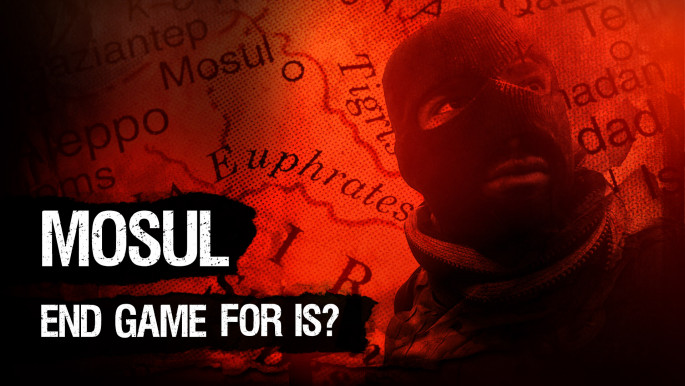Mosul casualties 'three times higher' than expected in conflicts
Mosul casualties 'three times higher' than expected in conflicts
Almost half of the casualties of the battle for Mosul are civilians, the UN's humanitarian chief in Iraq has revealed, about three times more than expected in such a conflict.
3 min read
Civilian casualties in Iraq are three times higher than expected [Getty]
Nearly half of casualties in Iraq's battle for Mosul are civilians, the UN has said, more than triple the number expected.
Some 47 percent of the victims of the three-month war against the Islamic State group have been Iraqis caught in the crossfire, the international body estimated.
The figure comes as around 750,000 remain trapped in the western part of the city, still under IS control.
Some 47 percent of the victims of the three-month war against the Islamic State group have been Iraqis caught in the crossfire, the international body estimated.
The figure comes as around 750,000 remain trapped in the western part of the city, still under IS control.
"You would expect in a conflict like this that the number of civilian casualties would be around 15 percent, a high of 20 percent.
"What we're seeing in Mosul is that nearly 50 percent of all casualties are in fact civilians," UN humanitarian coordinator in Iraq Lise Grande said.
When the military operation to uproot the extremist group from northern Iraq began on October 17, 1.5 million civilians were living in Mosul. In the eastern part of the city, where Iraqi forces say they have liberated 80 percent of the area, some 400,000 are now free of control.
However, the western part of the city, an area that is much more densely populated and home to 750,000, remains under militant control.
Military operations to retake that part of the city are expected to begin in late February or early March.
"One of the exceptional aspects of the Mosul military operation was the decision by the Iraqi security forces to adopt a humanitarian concept of operations when they were developing their battle plans," said Grande.
The plan prohibits artillery strikes, requires civilians to remain in their homes, and provides humanitarian exit corridors wherever necessary. That puts civilians at great risk, Grande said.
"It's clear that this is because of direct targeting by combatants. They're being targeted by ISIL. They're being shot as they try and leave the city and they're being shot as they try and secure food and other resources," she added, using another acronym for the hardline group.
"What we're seeing in Mosul is that nearly 50 percent of all casualties are in fact civilians," UN humanitarian coordinator in Iraq Lise Grande said.
When the military operation to uproot the extremist group from northern Iraq began on October 17, 1.5 million civilians were living in Mosul. In the eastern part of the city, where Iraqi forces say they have liberated 80 percent of the area, some 400,000 are now free of control.
However, the western part of the city, an area that is much more densely populated and home to 750,000, remains under militant control.
Military operations to retake that part of the city are expected to begin in late February or early March.
 |
They're being shot as they try and leave the city and they're being shot as they try and secure food and other resources |  |
The plan prohibits artillery strikes, requires civilians to remain in their homes, and provides humanitarian exit corridors wherever necessary. That puts civilians at great risk, Grande said.
"It's clear that this is because of direct targeting by combatants. They're being targeted by ISIL. They're being shot as they try and leave the city and they're being shot as they try and secure food and other resources," she added, using another acronym for the hardline group.
Meanwhile, aid agencies are worried that a siege is a very real possibility.
A siege of 750,000 people would have enormous implications and that 90 percent of efforts to break a siege fail, Grande said.
Given the statistics, stakeholders are working as hard as possible to deliver supplies.
A siege of 750,000 people would have enormous implications and that 90 percent of efforts to break a siege fail, Grande said.
Given the statistics, stakeholders are working as hard as possible to deliver supplies.
Collapse of Mosul dam
The potential collapse of the Mosul dam is another looming risk, which could be disastrous for some 20 million people due to its capacity for damage as well as the unpredictability.
 |
Anyone who says a catastrophic outburst would be 'Biblical' – they are correct |  |
"Anyone who says a catastrophic outburst would be 'Biblical' – they are correct," said Grance, who is a trained hydrologist and expert on Mosul dam.
In response to danger, UN agencies have created an early warning system with the Iraqi Government and the UN Office for Coordination of Humanitarian Affairs (OCHA) is developing an international response to assist the government in the event of the dam's collapse.
| Catch up with all our coverage from Mosul here: | |
 |



